Direct drive washing machines: what does it mean and how to choose?
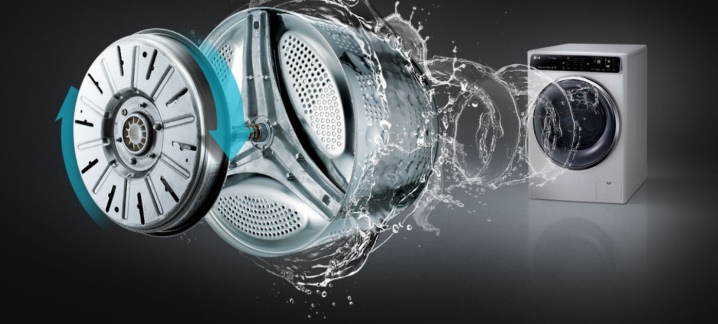
More and more washing machine manufacturers are moving towards direct drive models. At the same time, in advertising, this is presented as a virtue, without additional explanations. Therefore, before buying a new machine, it is worth finding out what a direct drive is, what advantages this arrangement of the device has and how to choose the right model of such equipment for you.
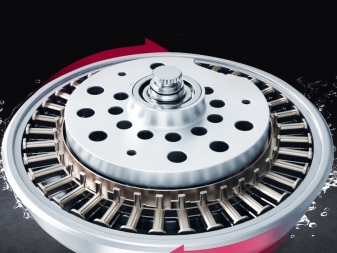

What it is?
The direct drive washing machine is different from the conventional way with which rotation from the electric motor is transferred to the drum. In the classic versions of these devices, the motor was located slightly away from the drum (usually from the bottom), and the shafts of the two parts were connected by a belt, which transmitted the torque. At the same time, the drum was equipped with a pulley (wheel with a groove for a belt), which was connected to the shaft. The belt was put on the drum pulley and the motor shaft.
Models with direct drive are arranged differently - in them the electric motor is directly connected to the drum, and there is no belt drive. In this case, the devices are on the same axis, and the motor is located behind the drum near the rear wall of the machine.
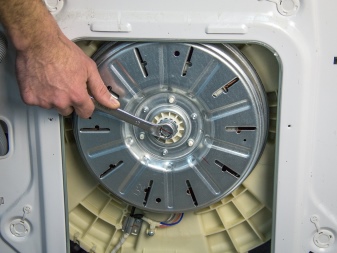
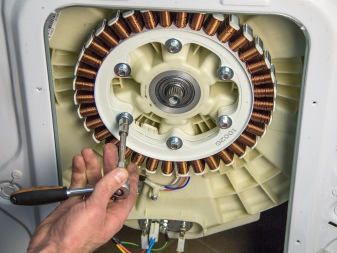
Another important difference between these two types of arrangement is the type of electric motor. For classic machines, either asynchronous (mainly three-phase, two-phase versions have not been produced since the beginning of the XXI century) or collector motors are used. But for machines with direct drive, only inverter motors are used. This part, like other types of motors used in washing machines, consists of a rotor (rotating part) and a stator (stationary part). But unlike other types of motors, their design does not provide for collectors and brushes.
The main difference between the principle of operation of inverter motors from other options is the use of inverted current. This means that the alternating current coming from the network is first converted into direct current, and then becomes alternating again, but with the frequency necessary to ensure the specified operating mode of the engine. The frequency of the current after inversion is controlled by a controller connected to the inverter, which sets the desired value according to the washing or spinning mode that the user has selected.
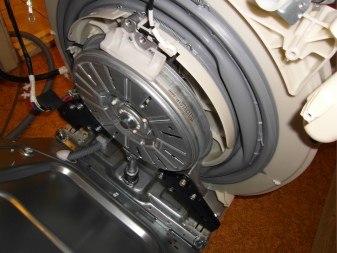

Advantages and disadvantages
Direct connection of the motor to the drum provides the following main advantages.
- Smooth speed control - the inverter is able to set the frequency of the electric current in a wide range, which, in turn, allows you to adjust the drum speed within wide limits with a very small step and significantly expand the number of washing programs. And the strict correspondence of the drum speed to the selected mode leads to the fact that the washing quality of such machines is noticeably higher than that of ordinary ones. In addition, only this technique is capable of wringing out laundry at a speed of more than 1200 rpm, and some of its models allow this figure to be increased to 2000 rpm. This high-speed spin allows you to shorten the drying time to a minimum or not dry the wrung out at all.
- Quick exit to operating mode - Thanks to the inverter motor, these machines can quickly increase the number of revolutions to the required one, which reduces the duration of the wash and increases the life of the motor.
- Fewer mechanical parts - inverter machines are completely devoid of a belt drive, pulley, brushes and collectors.It is these elements in machines with a conventional design that experience the highest regular mechanical loads as a result of friction, and, accordingly, they are the ones that most often fail. Their absence makes it possible to increase the reliability of the machine and extend its expected service life before the first repair.
- Profitability - the rejection of a belt drive and a reduction in the number of other friction units make it possible to increase the efficiency of such a machine by several tens of percent, as a result of which it consumes noticeably less electricity than a conventional unit when washing and spinning in similar modes.
- Quiet and reduced vibration - the fewer rotating parts in contact with each other in the device, the less noise and vibration emanates from it. Most models with direct drive are characterized by noise of up to 55 dB during washing and up to 70 dB during spinning, while variants with a belt drive are usually characterized by noise of 60 dB during washing and 70 dB during spinning. Accordingly, the chances of your machine moving out of place during the wash are reduced, and the likelihood of items placed on the lid falling to the floor.
- The ability to monitor the distribution of laundry in the drum and adjust the mode to improve the quality of washing... One of these technologies, namely Beat Wash, is actively used in new washing machines from Hitachi and Panasonic.

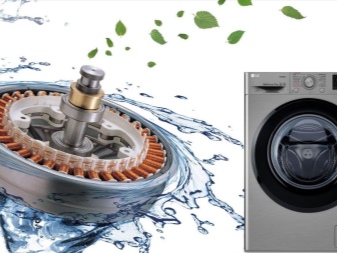
This layout option also has some disadvantages compared to classic models.
- Higher price - the presence of a complex system for controlling the frequency of the operating current leads to a rise in the cost of the device relative to analogues by several tens of percent.
- High cost of repairs - Direct drive is generally more reliable than belt drive, but its use leads to increased bearing loads. The cost of these parts exceeds the cost of belts, brushes and collectors, and in the event of their failure, repairs will have to cost more than repairing a machine with a belt drive. Moreover, a bearing or oil seal failure can lead to water entering from the drum directly into the engine (which is almost impossible with a classic layout), and this in most cases ends with its replacement. Therefore, such a machine will save time on repairs, but not money.
- The need for protection against power outages - the machine must be connected to the network through a filter or voltage stabilizer. This technique is much more sensitive to voltage surges than machines with simpler induction and collector motors.
- The impossibility of creating a super-narrow (up to 35 cm) model - the minimum depth of the machine is limited by the sum of the depth of the drum and the length of the engine, and not by the dimensions of the drum alone.
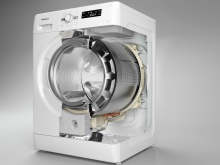

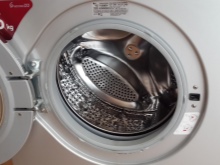
Popular models
The rating of the best washing machines with an inverter motor will help you make the right choice.
- Electrolux EWW 51685WD - due to the presence of a drying mode, a capacity of 8 kg, the OptiSense automatic washing mode system, 15 washing programs for different types of fabrics and spinning at a speed of up to 1600 rpm, this model is put in first place by most reviewers and reviews.
Its main disadvantages are its relatively high price (about 26,000 rubles) and energy efficiency class A, which makes it less economical than many other machines.
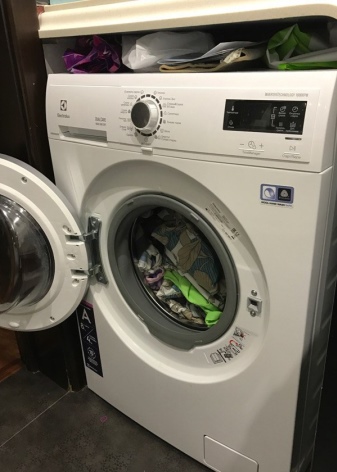
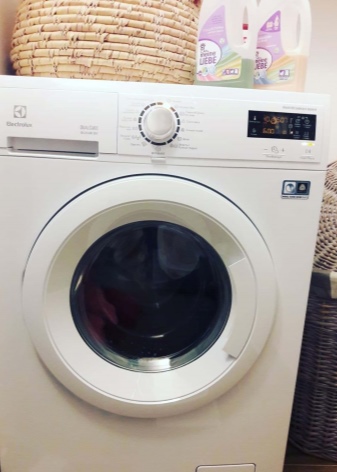
- Haier HWD80-B14686 - in terms of functionality, the model of this brand is almost not inferior to the previous one, and in terms of energy consumption class (A +++) it even surpasses it. At the same time, in terms of dimensions, it belongs to the narrow type (its depth is 46 cm), but despite this, the maximum load is 8 kg for washing and 5 kg for drying. The main disadvantages of this machine are a slightly lower maximum spinning speed (1400 per minute) and a rather high price (about 44,000 rubles).
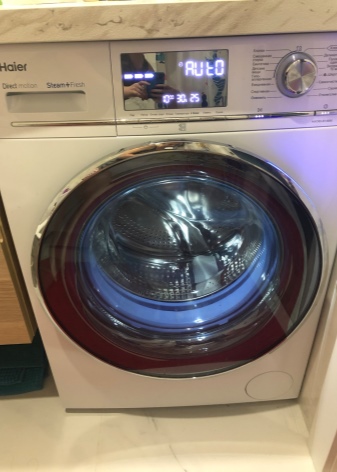

- LG F1096 ND3 - at one time it was LG that was the first to introduce direct drive washing machines. And although the Korean brand has lost its leadership a little now, these machines still occupy high positions in most ratings.This model is distinguished by a narrow layout (width 44 cm), a capacity of 6 kg, the presence of 13 wash programs and an energy efficiency class A ++. The main disadvantages are the lack of a drying mode and a maximum spin speed of 1000 rpm.


- Bosch WAW 32540 - a model with dimensions 60 × 60 × 85 cm, a capacity of 9 kg, 14 programs for different fabrics, a maximum spin speed of 1600 rpm and an energy efficiency class A +++. It features a low noise level (48 dB during washing), reliable AquaStop protection against leaks and a VarioDrum that protects clothes from damage.
The main disadvantages are the high price (67,000 rubles) and the lack of drying.
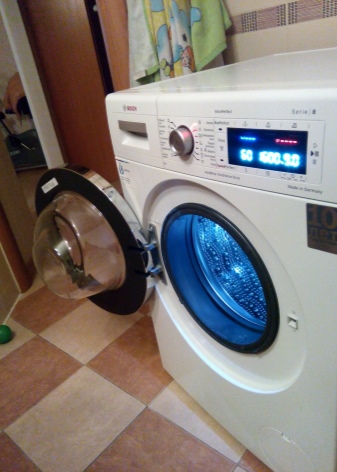
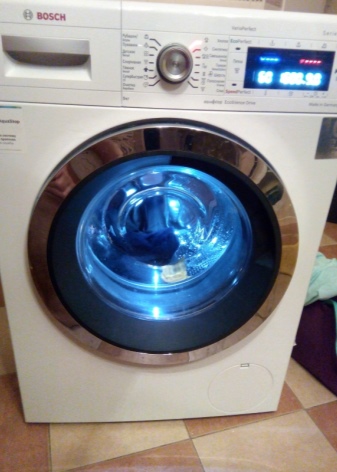
- Samsung WW65K52E69S - narrow (45 cm) version with a capacity of 6.5 kg with 12 programs and A-class energy efficiency. The main advantage is the Eco Bubble technology, which allows you to avoid traces of powder on the washed items and improve the quality of washing. The main disadvantage is the lack of drying and spinning at a speed of up to 1200 rpm.
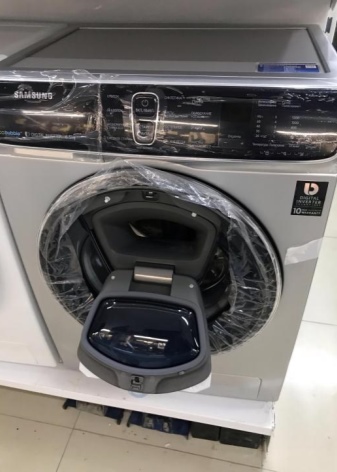
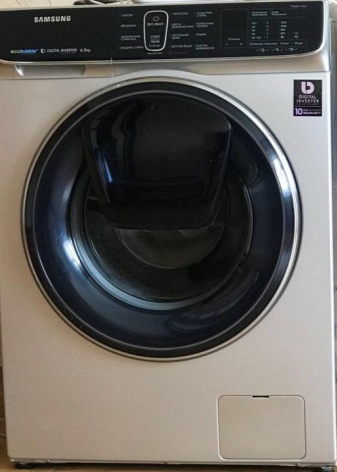
Selection Tips
When choosing an inverter washing machine, it is important to consider these characteristics.
Energy efficiency class of washing
In order to take full advantage of the advantages of the inverter motor, it is important that all other equipment installed in your unit also has a high efficiency... Therefore, it is important to pay attention to the energy efficiency class of the model in question - for options without a dryer, it should be at least A (preference should be given to models of class A +), and washer-dryers should not be less than B-class. At the same time, the device must not have a washing class lower than A.
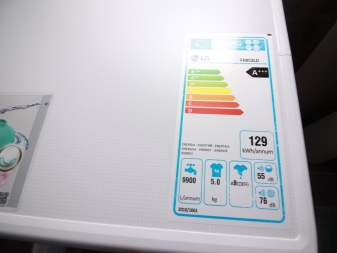
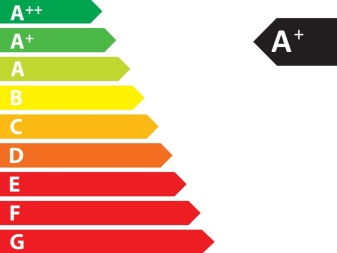
Optimum spin speed
All direct drive options are capable of spinning at 1200 rpm, but some models can support higher speeds. Optimal from the point of view of the combination of price and spin efficiency will be a machine that provides a mode of 1600 rpm. It only makes sense to purchase models with a higher speed if you often have to wash products made of coarse or dense fabrics that can go through an ultra-high speed spin without wear or damage.

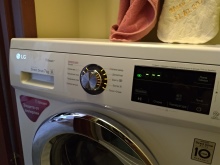
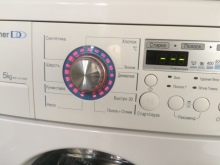
Drum dimensions and capacity
Choosing between narrow (up to 45 cm) and regular models, it is worth assessing in advance how much the possible savings in free space are worth the increased costs (narrow models usually cost more than their larger counterparts).
As for the maximum load, 4-6 kg will be enough for an ordinary family, families with two or more children will need a car with a drum holding 8 kg, and large families should consider purchasing a model with a capacity of 10 kg or more.
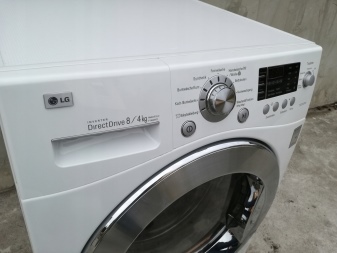
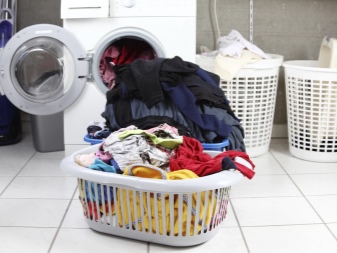
Noise level and functionality
Despite the fact that all direct drive models are on average quieter than the classic models, relatively quiet and loud options stand out among them. The minimum achievable noise level for such devices during washing is 41 dB, but if you and your household are not distinguished by increased hearing sensitivity, then a model with a noise level of less than 55 dB will be sufficient for comfort.
As for additional functions, then it is worth giving preference to machines with automatic mode selection technologies, for example, OptiSense or Fuzzy Logic.
And if finances allow, then it is worth buying a machine with an automatic mode correction function during the washing process - for example, UseLogic or Beat Wash.
The video below shows the LG Direct Drive inverter motor.













The comment was sent successfully.